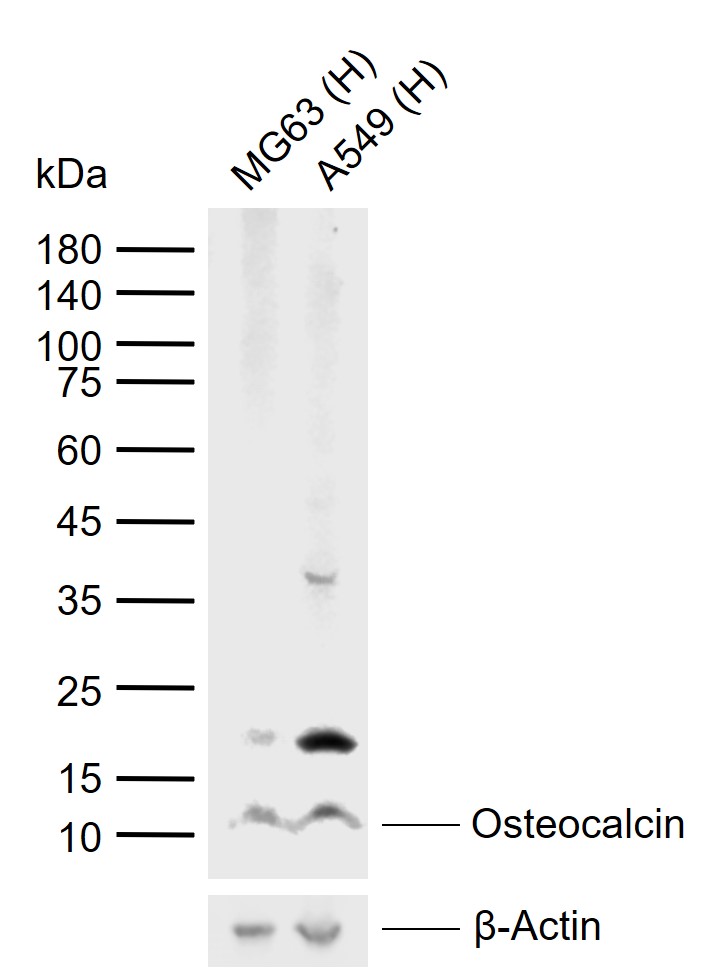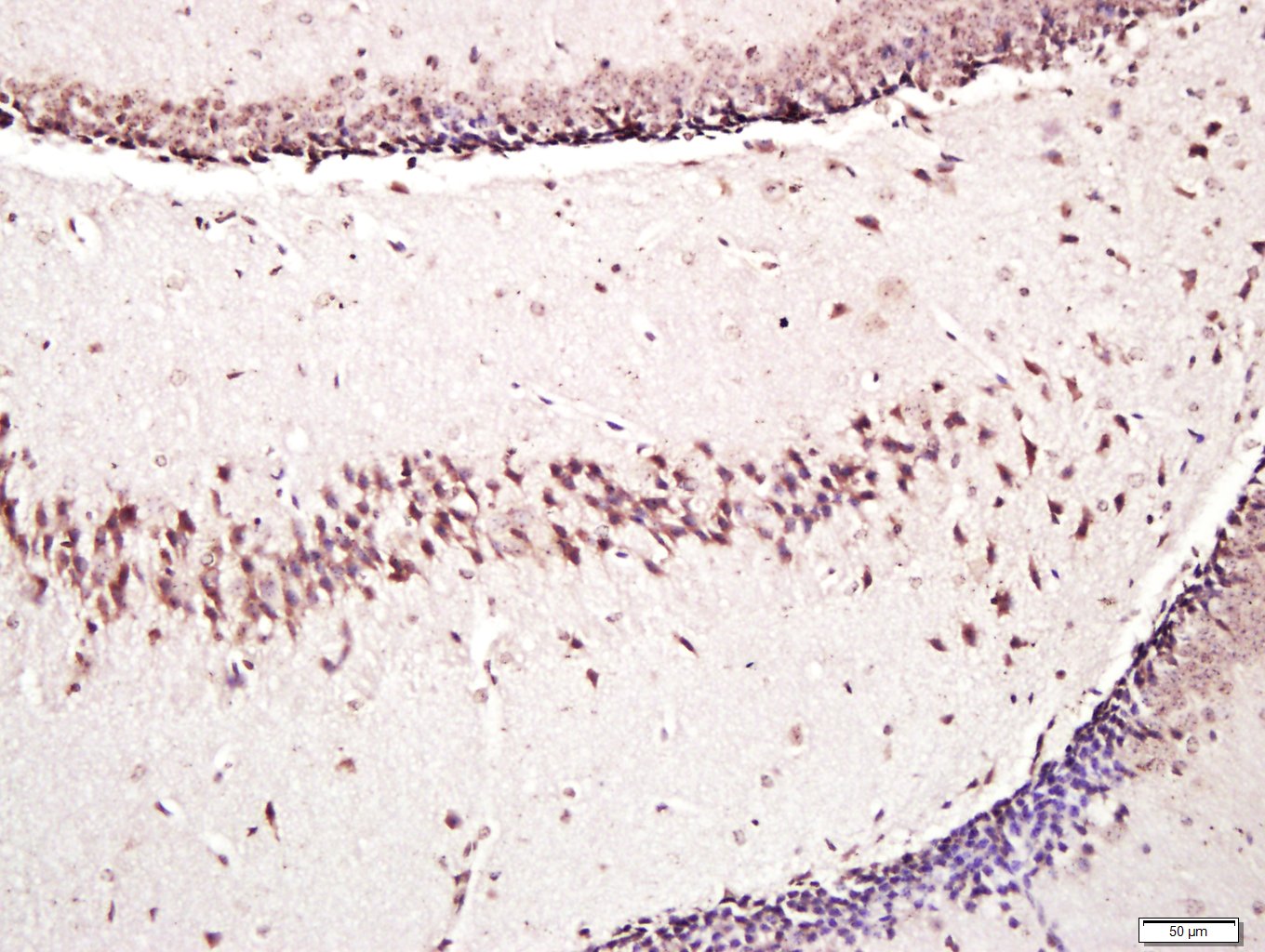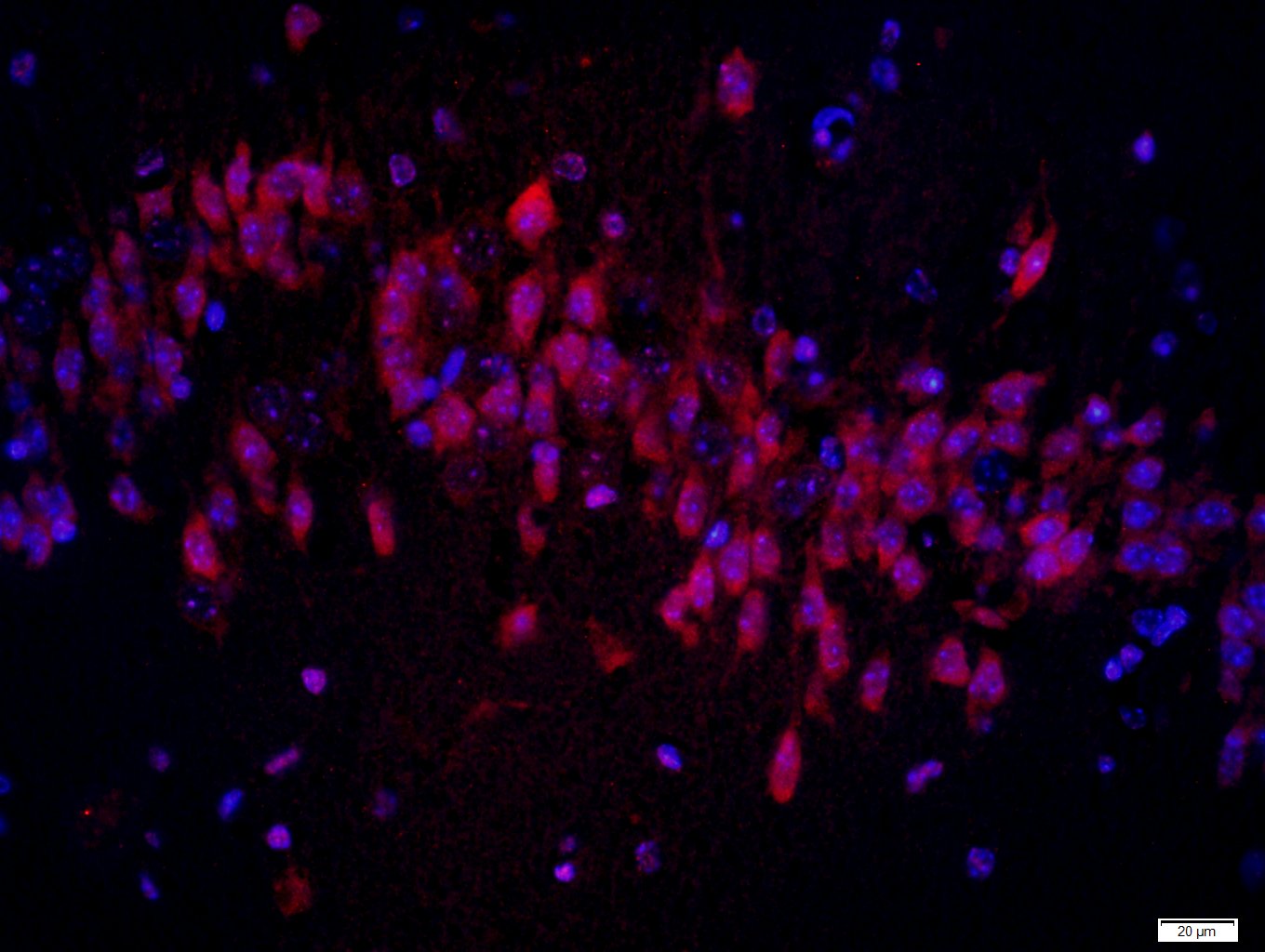
Rabbit Anti-Osteocalcin antibody
Osteocalcin Propeptide; Gamma-carboxyglutamic acid-containing protein; Bone Gla-protein; BGLAP; Bone gamma carboxyglutamate protein; BGLAP; BGP; Bone gamma carboxyglutamate gla protein osteocalcin; Bone gamma carboxyglutamate protein; Bone Gla protein; Ga
View History [Clear]
Details
Product Name Osteocalcin Chinese Name 骨钙蛋白/骨钙素抗体 Alias Osteocalcin Propeptide; Gamma-carboxyglutamic acid-containing protein; Bone Gla-protein; BGLAP; Bone gamma carboxyglutamate protein; BGLAP; BGP; Bone gamma carboxyglutamate gla protein osteocalcin; Bone gamma carboxyglutamate protein; Bone Gla protein; Gamma carboxyglutamic acid containing protein; OC; PMF1; OSTCN_HUMAN. literatures Research Area Cell biology Signal transduction Stem cells Extracellular matrix Immunogen Species Rabbit Clonality Polyclonal React Species Human, Mouse, (predicted: Rat, ) Applications WB=1:500-2000 ELISA=1:5000-10000 IHC-P=1:100-500 IHC-F=1:100-500 IF=1:100-500 (Paraffin sections need antigen repair)
not yet tested in other applications.
optimal dilutions/concentrations should be determined by the end user.Theoretical molecular weight 11kDa Cellular localization Secretory protein Form Liquid Concentration 1mg/ml immunogen KLH conjugated synthetic peptide derived from human Osteocalcin: 21-100/100 Lsotype IgG Purification affinity purified by Protein A Buffer Solution 0.01M TBS(pH7.4) with 1% BSA, 0.03% Proclin300 and 50% Glycerol. Storage Shipped at 4℃. Store at -20 °C for one year. Avoid repeated freeze/thaw cycles. Attention This product as supplied is intended for research use only, not for use in human, therapeutic or diagnostic applications. PubMed PubMed Product Detail Osteocalcin belongs to the osteocalcin/matrix Gla protein family and constitutes 1 to 2% of the total bone protein. It is a 49 amino acid single chain vitamin K dependent protein, made by osteoblasts, and is a major component of the noncollagenous bone matrix. Post translational modification by a vitamin K dependent carboxylase produces three gamma carboxyglutamic acid residues at positions 17, 21 and 24, giving it a high affinity for calcium. It also binds strongly to apatite.
Function:
Constitutes 1-2% of the total bone protein. It binds strongly to apatite and calcium.
Subcellular Location:
Secreted.
Post-translational modifications:
Gamma-carboxyglutamate residues are formed by vitamin K dependent carboxylation. These residues are essential for the binding of calcium.
Similarity:
Belongs to the osteocalcin/matrix Gla protein family.
Contains 1 Gla (gamma-carboxy-glutamate) domain.
SWISS:
P02818
Gene ID:
632
Database links:
Entrez Gene: 632 Human
Omim: 112260 Human
SwissProt: P02818 Human
Unigene: 654541 Human
Unigene: 9722 Rat
骨钙素又称骨γ-羧谷氨酸包含蛋白Product Picture
Lane 1: Human MG63 cell lysates
Lane 2: Human A549 cell lysates
Primary: Anti-Osteocalcin (SL4917R) at 1/1000 dilution
Secondary: IRDye800CW Goat Anti-Rabbit IgG at 1/20000 dilution
Predicted band size: 11 kDa
Observed band size: 11 kDa
Paraformaldehyde-fixed, paraffin embedded (mouse brain); Antigen retrieval by boiling in sodium citrate buffer (pH6.0) for 15min; Block endogenous peroxidase by 3% hydrogen peroxide for 20 minutes; Blocking buffer (normal goat serum) at 37°C for 30min; Antibody incubation with (Osteocalcin) Polyclonal Antibody, Unconjugated (SL4917R) at 1:400 overnight at 4°C, followed by a conjugated secondary (sp-0023) for 20 minutes and DAB staining.citrate buffer (pH6) for 15min; Block endogenous peroxidase by 3% hydrogen peroxide for 20 minutes; Blocking buffer (normal goat serum) at 37°C for 30min; Antibody incubation with (Osteocalcin) Polyclonal Antibody, Unconjugated (SL4917R) at 1:400 overnight at 4°C, followed by a conjugated secondary (Goat Anti-rabbit IgG/Bio) for 20minutes at 37°C, followed by a conjugated streptavidin (SL0437P-Cy3) at[1:500] for 40 minutes and DAPI staining of the nu Paraformaldehyde-fixed, paraffin embedded (mouse brain); Antigen retrieval by boiling in sodium clei.
References (0)
No References
Bought notes(bought amounts latest0)
No one bought this product
User Comment(Total0User Comment Num)
- No comment





 +86 571 56623320
+86 571 56623320
 +86 18668110335
+86 18668110335

